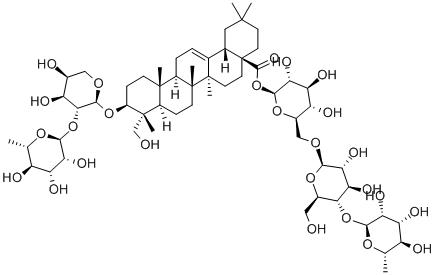-
Categories
-
Pharmaceutical Intermediates
-
Active Pharmaceutical Ingredients
-
Food Additives
- Industrial Coatings
- Agrochemicals
- Dyes and Pigments
- Surfactant
- Flavors and Fragrances
- Chemical Reagents
- Catalyst and Auxiliary
- Natural Products
- Inorganic Chemistry
-
Organic Chemistry
-
Biochemical Engineering
- Analytical Chemistry
- Cosmetic Ingredient
-
Pharmaceutical Intermediates
Promotion
ECHEMI Mall
Wholesale
Weekly Price
Exhibition
News
-
Trade Service
Scent mushrooms
bacteria species mycelium white, stout, stretch, uniform, neat edges, fast growth speed; After the mycelium is full of bottles, amber clear liquid is common within 10 to 15 days, and has the unique aromatic odor of mushrooms, odorless and moldy taste.Such as the bottle of mycelium column and bottle wall separation, indicating that
culture
caused by excessive moisture, if both disengaged, mycelium column began to shrink, the surface of the fungus thickened and turned dark brown, indicating that the strain has begun to age, can not survive, should be used immediately.If the surface of the bacteria column has appeared mushroom buds, is one of the characteristics of good strains, mushroom buds should be removed as soon as possible to use;if the bacteria can be seen in the bottle of wood particles, is insufficient culture time, should continue to cultivate for a period of time. If the quality of rice bran used is too poor (including too many grain shells), resulting in poor growth of mycelium, should be replaced
culture
, re-production.mushroom speciesdense, robust, evenly distributed, transparent, shiny, pale yellow-white. There are a large number of yellow-white or rusty red thick spores, for the normal small mushroom species;if the bottle of mycelium shrinks, withers, grows weakly, the culture base dries up or decays, is an aging strain and cannot be used.if the silk white, concentrated or in the bottle grow ink-shaped umbrella bacteria as a ghost umbrella, can not be used.of the cultivated species generally does not exceed 20 days.if there is a pest in the strain, it should be eliminated.Black wood ear species mycelium white, like fine wool, hair short neat, dense, stout and powerful, go hand in hand until the bottom of the bottle, grow evenly, up and down consistent, dug out into pieces, not loose.a full bottle, brown water drops are usually secreted on the surface of the bacteria. Later, light yellow transparent glial ear buds appear around the bottle wall and on the surface.column and bottle wall close to the inner wall of the bottle with a small number of white water beads for fresh bacteria. If there is light yellow water at the bottom of the bottle, the column is dry and shrinks from the wall, which is an aging strain and cannot be used.Normal bacteria have a unique aromatic odor of black wood ears, if there is odor and mold, or the appearance of plaque-like and speckled non-bacterial phenomenon, is bacterial pollution, if there are other red, green, yellow, black and other colors, indicating that has been contaminated by germs, can not be used.If a light black glial (ear base) appears between the culture base and the bottle wall, it indicates that it is precocious or has been amplified too many times, the cultivated ear piece is small, the number is large, not easy to grow, the quality is poor, the yield is low, should be eliminated.if wood particles can be seen in the bottle and there is very little mycelium, indicating that the culture time is too short, should continue to culture. If there is no significant change after a period of cultivation, it indicates that the culture base is undernourished and should be supplemented.if the strain grows to about half or a corner no longer grows, it may be too dry or too wet. If the silk growth is neat, dense, suddenly appear sparse, and there is a clear boundary, indicating that the upper material is moderate, the lower pressure is too dense.the surface and interior ofkinds of wood and branch species should be full of white mycelium, if cut open after not seeing mycelium, indicating that the wood and branches are too wet, mycelium development time is too short, should continue to cultivate.Sein ear species fragrant gray mycelium is feathery, strong growth, the initial distribution is uniform, white, the later appear under the ear base into a bunch of root-like distribution, the surface of black scarring, no other color spots, indicating that the growth of the ash bacteria is good.silver ear mycelium deep culture base that is "eat" material depth, under the ear base has a thick layer of silver ear mycelium, wood chips color fade, indicating that the silk decomposition force is strong.the proportion of silver ear mycelium and balsamic gray mycelium is moderate, forming a white-body white hair group on the surface of the medium. White hair group growth is exuberant, ear-based large, indicating that the bacteria age is small, strong life force, suitable for wood segment cultivation;if the fennel bacteria sparse, do not go deep into the culture material, the sub-body is gel-like or glue-like, do not open the tablet, indicating that the medium is too wet or over-loaded.if there is already a feather-like scented ash bacteria, there is no white hair, it must be like silver ear
yeast
-like spores to use, otherwise it can not be used.if the first half of the bottle of mycelium is sparse or disappears, the second half of the bottle of mycelium grows normally, and the ear base becomes pale red, producing a large amount of red-brown liquid, most of which occurs. If white floc membrane is found, it is contaminated with clutter and cannot be used.Mushroom species excellent mushroom species of mycelium is gray-white, dense, fluffy, fine velvet-like, up and down the growth of uniform, high temperature, insect-resistant bacteria, fast food, fan-free variation. The mycelium of the type of bacteria is a fine velvet distribution, no yellow-white bacteria.the mycelium in the culture is rough or thinly red and pale yellow. Mycelium cognac shrinks, growth is weak, or a very thick yellow-white bacteria appears above, are aging strains.strains with green, yellow, black or orange spores must be eliminated and burned.the upper mycelium of the culture base dry shrinkage, the lower mycelium growth is good, indicating that the culture base is too dry, the culture temperature is too high.if the culture material can hardly see mycelium, the contents into a paste, indicating that the temperature is too large, the bacteria species too old, can not be used.monkey head speciesexcellent monkey head species, mycelium white, dense, stout, up and down the growth of uniform. Sub-entities are easy to form on the culture.if the silk is dry or there is yellow mucus accumulation at the bottom of the bottle, it is an aging strain and cannot be used. the slow growth of mycelium weak, thin, may be the culture acidity is not enough or
organic
nitrogen deficiency, should be added to the culture of bran or fine rice bran dosage, to improve the nutritional conditions of the bacteria. the bacteria contaminated with germs can not use ping mushroom species excellent mushroom species, mycelium white, stout, dense, mycelium growth is uniform, neat, thick wool-like, strong wall climbing. Culture for about half a month, in the bottle wall can form a small number of coral-shaped mushroom buds or white raw base. Most varieties form fluffy gas-like mycelium on the surface above the medium, low-temperature varieties of gas-like mycelium often secrete tawny pigment, especially in high temperature season, low-temperature varieties often appear red-brown or tawny gas-like mycelium or yellow water, which is normal. if a large number of coral-shaped sub-bodies appear above the culture base or grow sub-entities from the gaps in the cap, it should be used as soon as possible if the bacteria are too old. If the culture base is dry and shrinks, yellow water accumulates at the bottom of the bottle, which cannot be used for aging strains. the upper mycelium is sparse, gray, weak, dry, the lower mycelium is normal, indicating that the initial culture temperature is too high, poor breathing, or bacterial contamination. If yellow, green and orange appear, it must be eliminated if it has been contaminated with penicillin, wood mold and streptosporine. in the bottle growth of about half, no longer down growth, indicating that the medium is too dry, too wet, too tight, can be used in the upper normal strain, no longer continue to culture. the golden needle mushroom is floc-like, white, dense, robust, elastic. Sometimes powdered powder spores can be seen on the surface, which are excellent strains. if there are tough bacteria film appear, as long as the removal of bacteria film can also be used. If the strain dries up, the column shrinks or the mycelium self-melts, producing a large amount of red-brown liquid, indicating that the species has weak living capacity, and if yellow appears, the strain is aging. 。







